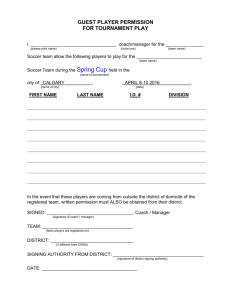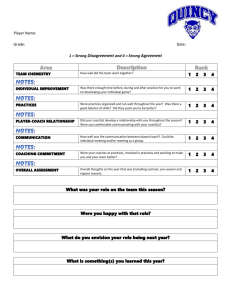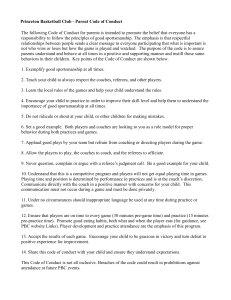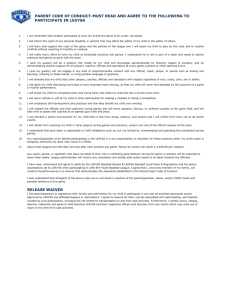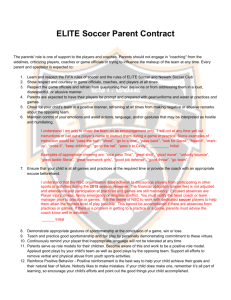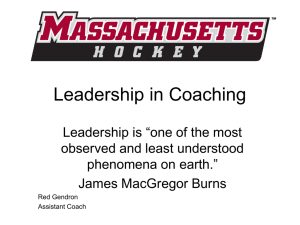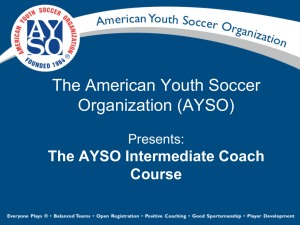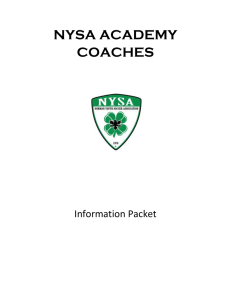Coaching Soccer
advertisement
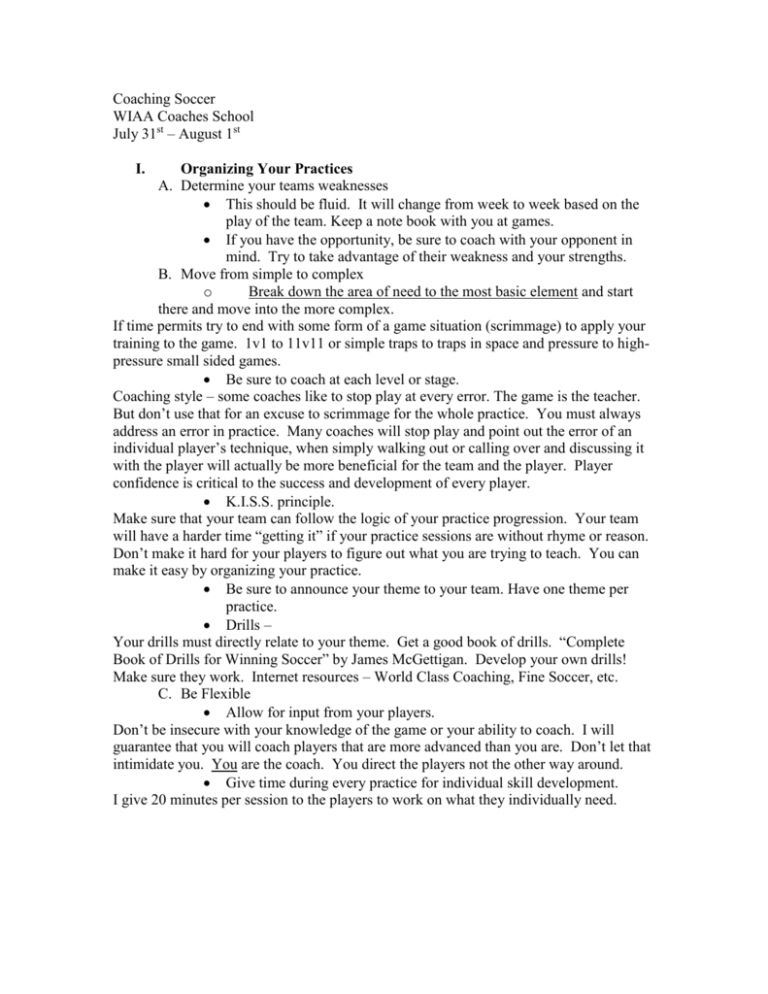
Coaching Soccer WIAA Coaches School July 31st – August 1st I. Organizing Your Practices A. Determine your teams weaknesses This should be fluid. It will change from week to week based on the play of the team. Keep a note book with you at games. If you have the opportunity, be sure to coach with your opponent in mind. Try to take advantage of their weakness and your strengths. B. Move from simple to complex o Break down the area of need to the most basic element and start there and move into the more complex. If time permits try to end with some form of a game situation (scrimmage) to apply your training to the game. 1v1 to 11v11 or simple traps to traps in space and pressure to highpressure small sided games. Be sure to coach at each level or stage. Coaching style – some coaches like to stop play at every error. The game is the teacher. But don’t use that for an excuse to scrimmage for the whole practice. You must always address an error in practice. Many coaches will stop play and point out the error of an individual player’s technique, when simply walking out or calling over and discussing it with the player will actually be more beneficial for the team and the player. Player confidence is critical to the success and development of every player. K.I.S.S. principle. Make sure that your team can follow the logic of your practice progression. Your team will have a harder time “getting it” if your practice sessions are without rhyme or reason. Don’t make it hard for your players to figure out what you are trying to teach. You can make it easy by organizing your practice. Be sure to announce your theme to your team. Have one theme per practice. Drills – Your drills must directly relate to your theme. Get a good book of drills. “Complete Book of Drills for Winning Soccer” by James McGettigan. Develop your own drills! Make sure they work. Internet resources – World Class Coaching, Fine Soccer, etc. C. Be Flexible Allow for input from your players. Don’t be insecure with your knowledge of the game or your ability to coach. I will guarantee that you will coach players that are more advanced than you are. Don’t let that intimidate you. You are the coach. You direct the players not the other way around. Give time during every practice for individual skill development. I give 20 minutes per session to the players to work on what they individually need. II. Organizing Your Games o Alignments – 442, 433, 352, 361, 343 (WM) Team alignments have evolved over the past 150 years. Before 1870 teams played a 2-8 system. The game was about dribbling and hacking each other. In 1867 the Queens Park team decided to try a more defensive approach. They went to a 226 alignment. From 1867 – 1874, Queens Park was never scored on. As the game evolved, soccer became a team effort instead of individualistic. It eventually moved to a 235 alignment. In 1925 the new offside rule caused Herbert Chapman of Arsenal to develop the stopper position that is still used regularly today. In 1953 the famous WM (343) system was introduced by the Hungarians. The WM system is the basis of all modern systems of play. Fundamentally, all modern systems of play are based on the dimensions of the field, the phases of the game (attack, defense, and midfield play), and the strengths and weakness of the players. The system of play that you adopt you should know why you use it. Your decisions should be based on the dimensions of the field, the phases of the game (attack, mid and defense) and the strengths and weakness of your players. Look at you team and determine what system you will coach. Many times you may adjust your alignment based on an opponent’s strengths or weaknesses or coaching decisions. o Control your Sideline conduct Be respectable Communicate more early in the season but less as the season progresses o Make Adjustments Think! Give scenarios – “down by 1 goal with 10 minutes left.” Etc. o Coach for next season III. Organizing Your Team A. Have Standards a. Conduct i. On field ii. Off field b. fitness c. Coach/player relationships B. Develop People a. Teach leadership What is leadership? b. Teach character 13 Statements – c. Teach responsibility d. Teach interdependence C. Establish Goals
